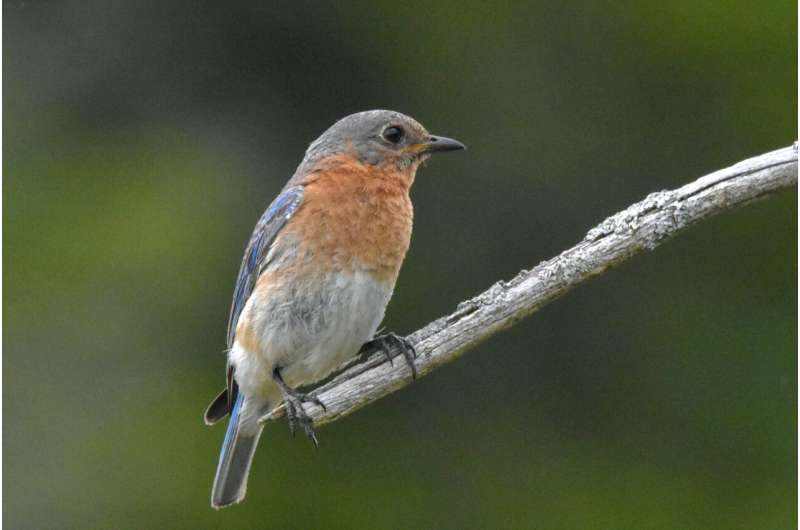Credit: Unsplash/CC0 Public Domain
Bird species around the globe are suffering and dying from a type of malaria and, while these strains are not infectious to humans, they're spreading quickly through global transmission hotspots.
An international team, including Dr. Konstans Wells, who leads the Biodiversity and Health Ecology research group at Swansea University, has been conducting research to understand where and why the disease has been spreading so rapidly and widely.
"Avian malaria now affects somewhere between 13 and 14 percent—on average—of all wild birds worldwide," said Dr. Wells.
"It's caused by a group of blood parasites—known as haemosporidian parasites—and, much like human malaria, is transmitted via blood-feeding insects like mosquitos.
"It can't harm humans but is known to have significant impacts on bird populations.
"For example, when avian malaria was introduced into Hawaii in the late 1800s to early 1900s, it was one of the major causes of extinction of about one-third of the 55 known species of Hawaiian honeycreepers.
"We've found that there are hotspots transmitting these parasites across the world."
Co-author Dr. Alan Fecchio from the Federal University of Mato Grosso in Brazil said: "Birds are most often infected with these parasites in the Sahara-Arabian region, but local hotspots with surprisingly high infection rates can be found in North America, Europe and Australia, depending on different parasite variants.
"In Europe, some of these blood parasites are causing high infection rates in our songbirds, including the common blackbird (Turdus merula) and coal tits (Parus ater)."
The research team compiled and analyzed what is likely the largest data set of wild bird infections with avian malaria parasites to date, with more than 53,000 wild birds examined.
They combined infection data with remotely sensed environmental data, such as climate or forest conditions, and bird life history information, such as body size and migration patterns, into computer models to identify which factors best described the infection risk with avian malaria parasites.
Co-author Dr. Nicholas Clark from the University of Queensland in Australia, said predicting which conditions facilitate the infection of wild birds with avian malaria is crucial for understanding infectious disease hazards.
"Since each bird species is unique in its ecological niche and is differently exposed to disease-transmitting insects during breeding and migration, infection risks are not the same for different bird species.
"Conditions that enable infection in different areas across the world are completely context-dependent.
"For example, long distance migrating birds were more likely to be infected in some continents but less likely in others."
Dr. Wells concluded: "There's no easy answer with so many factors at play, but we're going to continue our research to find out how to best protect the world's bird species from this deadly disease and better understand the spillover from harmful parasite from one species to another."
The research has been published in Global Ecology and Biogeography.
More information: Alan Fecchio et al, Global drivers of avian haemosporidian infections vary across zoogeographical regions, Global Ecology and Biogeography (2021). DOI: 10.1111/geb.13390
Journal information: Global Ecology and Biogeography
Provided by Swansea University























